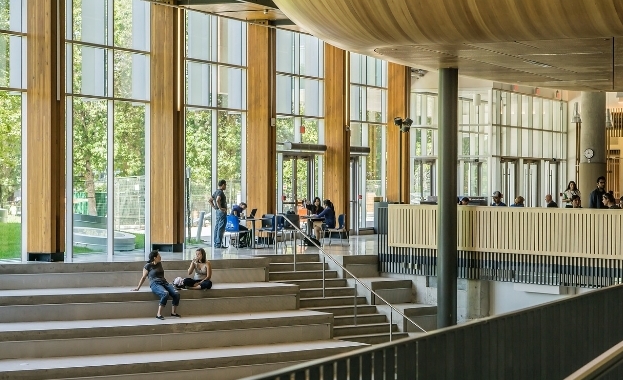Ontario College Strike Averted
Ontario College Strike : In recent news, the potential strike looming over Ontario colleges has been successfully averted. This outcome has brought relief to students, faculty, and administration alike. This article delves into the background of the strike threat, the negotiations that took place, the key issues at stake, and the implications of the resolution for the future of Ontario’s higher education system.
Background of the Strike Threat
The possibility of a strike in Ontario’s colleges arose from a series of unresolved issues between the college administrations and the faculty union. Tensions had been brewing for months, with faculty members expressing dissatisfaction over several key areas including wages, working conditions, job security, and academic freedom. The Ontario Public Service Employees Union (OPSEU), representing the faculty, argued that these issues needed urgent attention to ensure a fair and conducive working environment.
Historical Context
The history of labor disputes in Ontario colleges is not new. The last major strike in 2017 lasted for five weeks, affecting over 500,000 students and causing significant disruptions to the academic calendar. Lessons from that period underscored the importance of timely and effective negotiation to prevent similar scenarios. The government, students, and educational bodies were keen to avoid a repeat of the chaos experienced during the previous strike.
Key Issues at Stake
Wages and Compensation
One of the primary concerns for faculty members was wages. OPSEU highlighted that college professors in Ontario were among the lowest paid in Canada when considering cost of living adjustments. The union demanded salary increases that would bring Ontario faculty wages in line with national standards.
Working Conditions
Working conditions were another significant point of contention. Faculty members reported increasing workloads without corresponding compensation or support. This situation was exacerbated by the transition to online learning during the COVID-19 pandemic, which added pressure on professors to adapt quickly to new teaching methods and technologies.
Job Security
Job security was a major concern, particularly for contract and part-time faculty. These employees often face uncertainty about their employment status from semester to semester, which affects their financial stability and long-term planning. The union pushed for more permanent positions and better job security measures.
Academic Freedom
Academic freedom is a fundamental aspect of higher education, allowing educators to teach and research without undue interference. OPSEU argued that faculty members were increasingly facing administrative pressures that hindered their academic independence. Ensuring the protection of academic freedom was a crucial demand in the negotiations.
The Negotiation Process
Initial Stages
Negotiations between OPSEU and the College Employer Council (CEC), representing the colleges, began several months ago. Both parties presented their demands and engaged in multiple rounds of discussions. Despite initial progress, several sticking points remained unresolved, leading to a formal strike notice from the union.
Mediation and Government Involvement
As the strike deadline approached, the Ontario government intervened to facilitate mediation between the two parties. A government-appointed mediator helped bridge the gaps and encouraged both sides to find common ground. This mediation process was instrumental in preventing the strike, as it provided a neutral platform for both parties to express their concerns and work towards a mutually acceptable solution.
The Final Agreement
The breakthrough came in the eleventh hour when both sides agreed on a new collective agreement. Key elements of the agreement included a phased salary increase, improvements in working conditions, enhanced job security for part-time and contract faculty, and stronger protections for academic freedom. The details of the agreement were ratified by the union members, who voted overwhelmingly in favor of accepting the deal.
Implications of the Resolution
For Students
The resolution of the strike threat has significant implications for students. The most immediate benefit is the uninterrupted continuation of classes, which means students can proceed with their academic schedules without the fear of delays or disruptions. This stability is crucial for maintaining academic progress and planning for future educational and career opportunities.
For Faculty
For faculty members, the new agreement marks a positive step towards addressing long-standing grievances. The agreed-upon salary increases, better working conditions, and enhanced job security will likely boost morale and job satisfaction. Moreover, the strengthened protections for academic freedom ensure that faculty can continue to teach and research without undue external pressures.
For the Colleges
For the colleges, averting the strike helps maintain their reputation and operational stability. Strikes can lead to financial losses, damage to institutional reputation, and challenges in student recruitment and retention. By reaching an agreement, colleges can focus on their primary mission of providing quality education and supporting their faculty and students.
For the Broader Education System
The successful resolution of this labor dispute sets a precedent for future negotiations within Ontario’s higher education system. It demonstrates that constructive dialogue and mediation can effectively address complex issues without resorting to strikes. This outcome may encourage other educational institutions facing similar challenges to adopt a collaborative approach in resolving disputes.
Conclusion
The averted strike in Ontario colleges is a testament to the power of negotiation and the importance of addressing the concerns of faculty members. By reaching a fair and balanced agreement, all parties involved have shown their commitment to maintaining a stable and supportive educational environment. The resolution not only benefits students and faculty but also reinforces the resilience and adaptability of Ontario’s higher education system.
As the colleges move forward, it is essential to continue fostering open communication and collaboration to ensure that the needs of educators, students, and institutions are met. This proactive approach will help prevent future disputes and contribute to the ongoing success and excellence of Ontario’s colleges.






